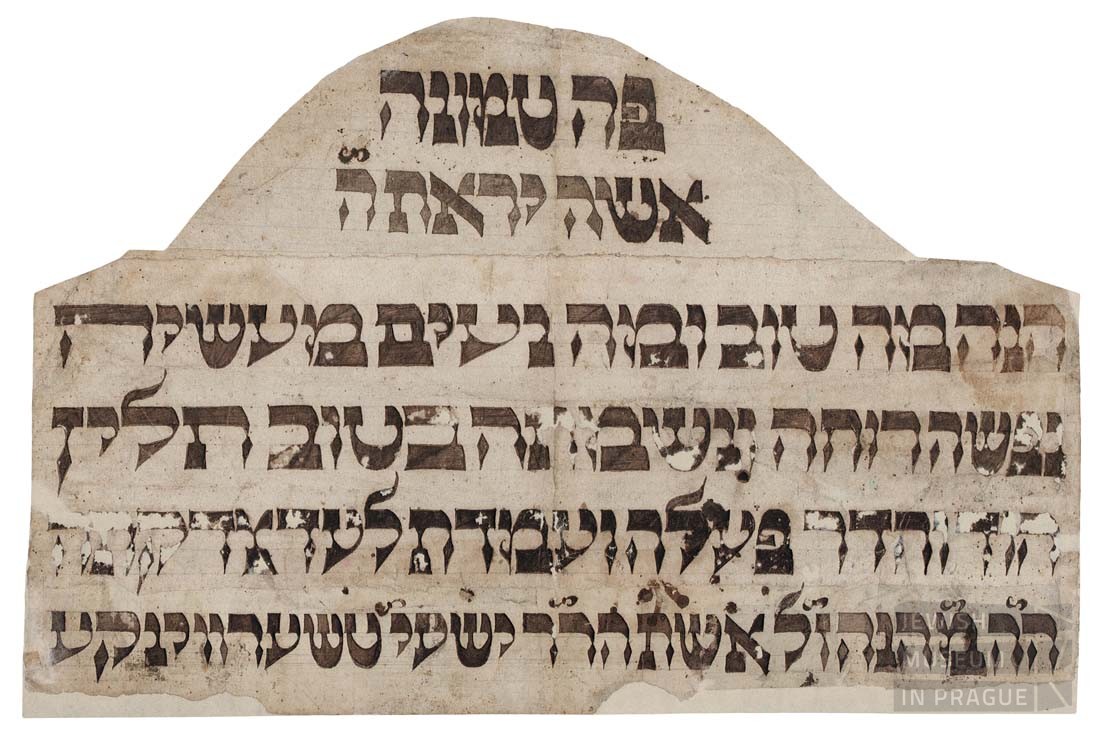
An epitaph template for the tombstone of Hannah, wife of Yeshayahu (Isaiah) Tscherwinka. Hannah Tscherwinka died of pneumonia on 19 September 1814 at the age of 74, and her grave marker was erected in 1815 – a year after burial in accordance with Jewish tradition. Documentary evidence of Yeshayahu Tscherwinka dates from 1793. He was a synagogue warden and a braidmaker.

The map shows the location of all the sites where the genizah items in the collections of the Jewish Museum in Prague were discovered (finds from other sites, such as Ivančice and Pacov, are not in the museum’s collections). Representative genizah items from each location are gradually being added to the museum’s website. Complete sets of genizah items can be found in the museum’s catalogue at collections.jewishmuseum.cz.